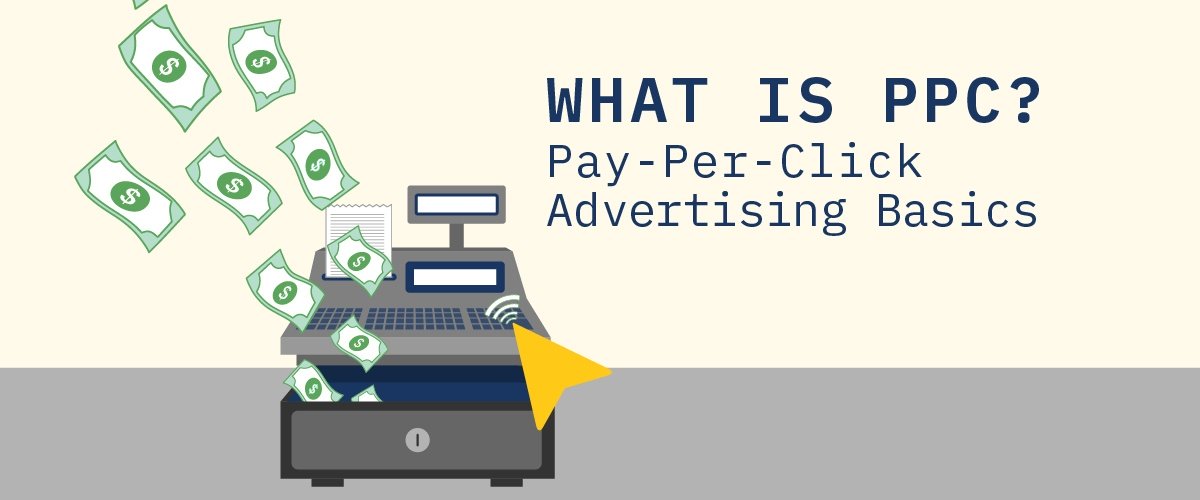What is PPC?
Pay-per-click (PPC) advertising provides businesses of all sizes access to millions of potential customers across the internet. PPC works by serving ads to people who are actively searching for, or have already expressed interest in, a company’s products or services.
After reading through this article, you’ll have a solid understanding of the basic principles of PPC and how to apply them.
How Does PPC Work?
PPC is designed to level the playing field among advertisers. The idea is, you don’t necessarily need deep pockets to access the same pool of potential customers as your biggest competitors.
PPC operates on an auction system where you, the advertiser, enters to rank ads for keywords and key phrases your potential customers are typing into a search engine.
Whether you’re running Google Ads or Bing Ads, each keyword comes at a variable cost, influenced by industry and demand. Many hear the term, “auction,” and think the higher the bid, the better the placement. That concept isn’t true of PPC.
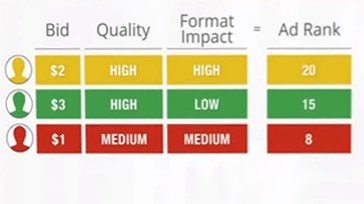
A visual of how the PPC ad auction works.
The amount you result in paying for each click is determined by the quality and relevance of your ads. The more relevant your ad is to customers, the less you need to bid in order to win the auction. Ultimately, the advertiser with the highest ad quality and the highest bid will win the auction using the minimum amount needed to beat their competition. Since the winner of the auction isn’t determined solely by bid size, advertisers on a low budget can still reach their customers with PPC.
Where Do Ads Show?
There are two major kinds of PPC advertising: Search and Display. In Search, your company pays Google, Bing, or another search engine provider to show your ad on a search results page to users who’ve searched for keywords you’ve selected.
Display ads, on the other hand, are image and text ads that appear on apps and websites all across the internet. Display ads also appear across social media platforms like Facebook and Instagram. With Facebook’s Business Manager, for example, advertisers create and run a variety of Display ads designed to transport users to a business’s website.
What Types of Ads Can I show?
Search and Display ads come in a variety of ad types that correspond to different goals you wish to achieve with PPC.
Text Ads
A text ad is your traditional paid search ad, simply containing words. They’re great for businesses looking to increase leads, calls, and/or quote forms. Control your ad’s appearance and write the ad copy, select which keywords will trigger your ad, and choose which page of your website will appear when your ad is clicked.
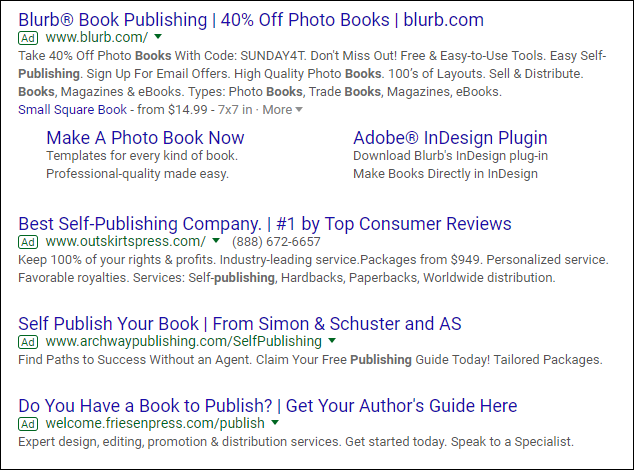
Text Ads created with Google Ads.
Image Ads
An image ad is your basic Display ad type, consisting of static or interactive graphics. Target internet users across various blogs, websites and social media platforms, depending on which PPC Platform you’re using. They are a great ad type for businesses promoting brand awareness because they allow you to reach new audiences based on their interests and the sites they visit.

Image Ad found on websites within the Display Network
Video Ads
Another great Display option is to engage users across the web with video ads. Give users a taste of what your business has to offer with a compelling story and eye-catching visuals. Typically placed on social media platforms and YouTube, Video ads are a great tool to promote brand awareness and expand your audience.
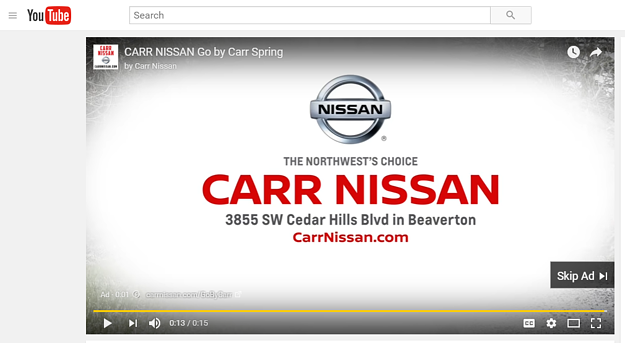
YouTube Video Ad managed through Google Ads.
Shopping Ads
The final type of Display ad, shopping ads allow e-commerce businesses to showcase a product to online shoppers searching for that specific product. Show shoppers an image of your product, price, store name, and highlight deciding factors for shoppers like free delivery or special promotions. Ads appear at the top of search results, giving e-commerce businesses a great opportunity to catch their shoppers before losing them to competitors further down the page.
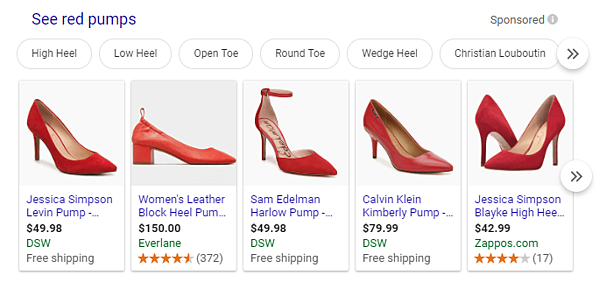
Google Shopping Ads found at the top of the results page.
How Can I Reach My Audience?
Targeting options within each PPC platform are the tools that enable your ads to reach the right people, in the right places, on the right day, at the right time. Narrow your target and increase performance by controlling the following aspects of your PPC campaigns:
Location
Target specific locations where you want your ad to show. Isolate individual cities and states, or open up your audience to multiple locations for a broader target audience. If you wish to avoid locations, you’re able to exclude areas for more controlled ad delivery.
Demographics
If you know your target audience well, demographic targeting allows you to tailor ads to specific age groups, genders, household income, and parental status.
Interests
Targeting interests is used for placing display ads in front of users based on outside interests and hobbies like sports, travel, and fashion. You can even get more granular by retargeting people who’ve previously visited your website.
Time of Day
What days are you potential customers searching for you the most? How about the hour of day? Ad scheduling lets you set certain hours of the day and days of the week to run your ads.
Device
Monitor where your leads are coming from. Mobile is often the first place people turn to for quick research. With device targeting, you can be there for them when they’re looking for you. Target mobile, tablet, and desktop users to fit the needs of your business.
How do I know it’s working?
Conversion Tracking data generated by PPC delivers concrete data on how your campaigns are doing. It’s that data that allows you to make adjustments to your campaigns, systematically improving their performance over time.
Any Paid Search or Display ad platform will come equipped with functions to track key performance indicators (KPIs) like the number of clicks or views your ad receives, the keyword a user searched to trigger your ad, and more.
There are a number of tracking tools you should use to monitor your campaigns’ performance:
Google Ads & Bing Tracking
Keep track of actions that happen on your website after a user clicks your ad. These actions are referred to as conversions, and are trackable in both Google and Bing PPC platforms. Examples of trackable conversions are form submissions, newsletter sign-ups, content downloads, and more. Conversion tracking is crucial to evaluating the success of a PPC campaign. Without conversion tracking, you won’t know whether your ads are working or what changes are needed to improve them.
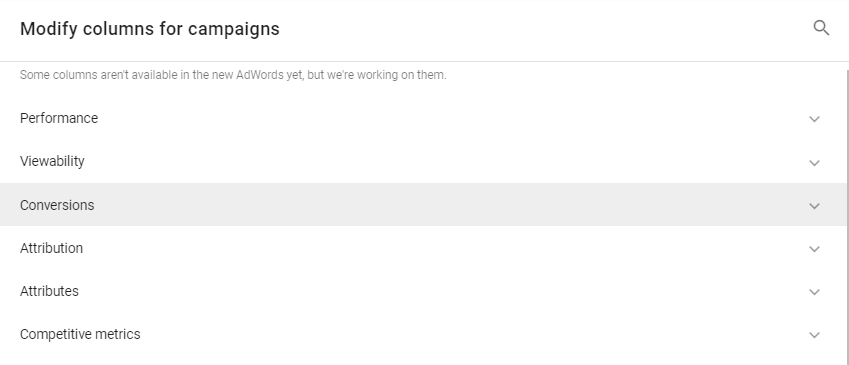
Customizing trackable metrics within Google Ads
Google Analytics
Capture the full picture of how users interact with your website. Rather than report on PPC-specific metrics, Google Analytics collects a wide spread of data on how users find your site, how engaged they are with your content, and at which point they lose interest. It can link up to your PPC campaign data for further insight on the moving parts impacting your campaigns.

Analyze user behavior on your website with Google Analytics.
Call Tracking
Phone calls generated from your PPC campaigns are measurable, down to the keyword level, with call tracking. An added benefit is recording phone calls, to qualify your leads and find new opportunities to shape your campaigns. There are a number of call tracking platforms, like CallRail and Marchex, that seamlessly integrate with your PPC campaigns for maximum efficiency.
While PPC offers a vast number of methods and tools to track performance, it’s common to set them up incorrectly. When getting started with tracking, be sure you’re tracking data accurately. Making decisions based off false information could be costly.
Where do I start?
The first step in any PPC campaign is to identify what you want for your business. Having clear goals based on data like profit margins, sales cycles, ideal customer profiles, and other factors allows you to set realistic campaign goals that you’re likely to achieve.
